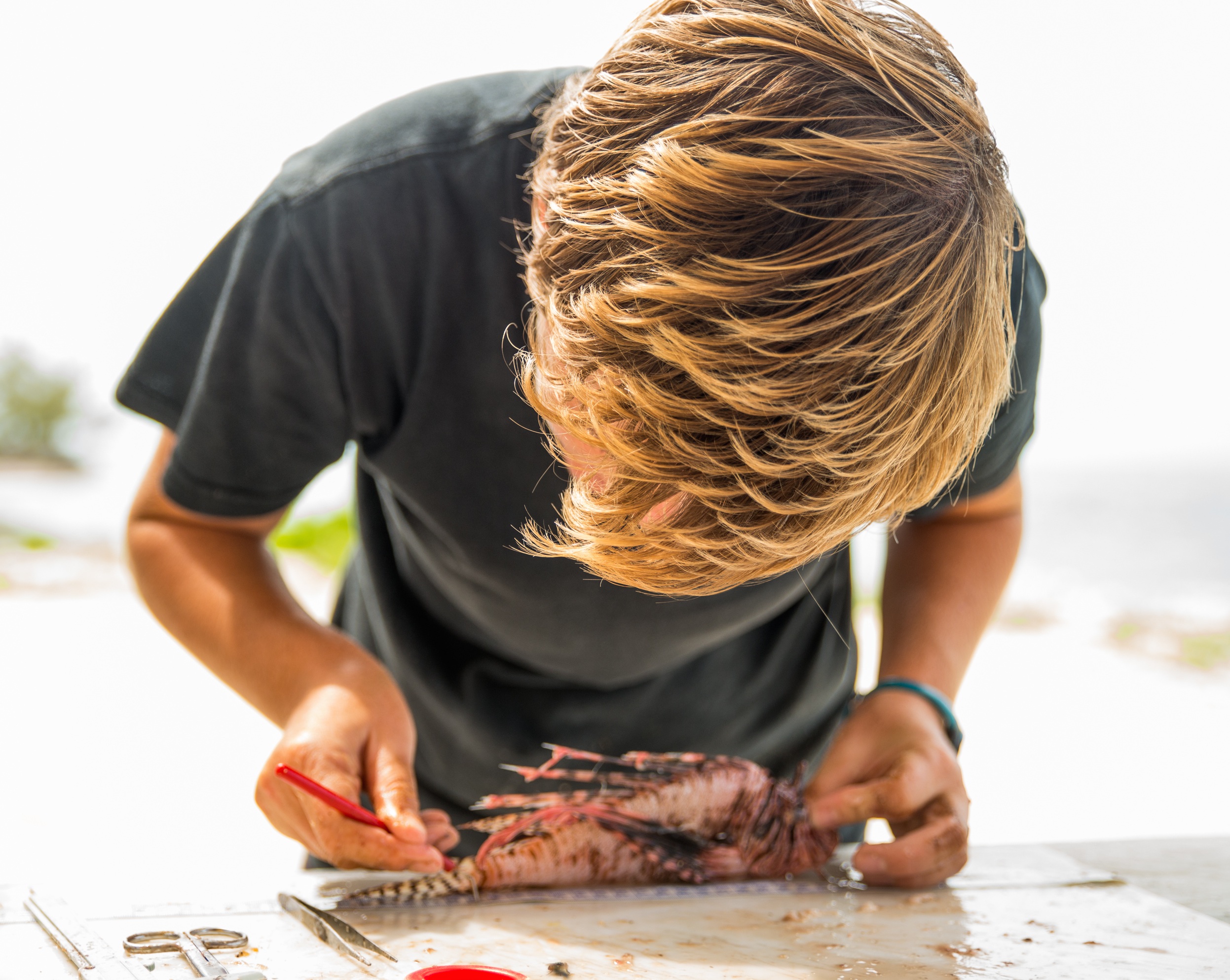 Gap Year students spent an afternoon with the sustainable fisheries program, dissecting lionfish and engaging in discussion about the invasive species. During the dissection students poked at lionfish visceral fat and removed the fishes’ venomous spines, among other organs. The dissection was a hands-on way to see how these habitat and feeding generalists thrive in the Bahamas. They eat during all hours of the day and, as a result, have more visceral fat than most fish. Understanding mechanisms which make lionfish such successful invaders is an important first step to effective management of the species.
Gap Year students spent an afternoon with the sustainable fisheries program, dissecting lionfish and engaging in discussion about the invasive species. During the dissection students poked at lionfish visceral fat and removed the fishes’ venomous spines, among other organs. The dissection was a hands-on way to see how these habitat and feeding generalists thrive in the Bahamas. They eat during all hours of the day and, as a result, have more visceral fat than most fish. Understanding mechanisms which make lionfish such successful invaders is an important first step to effective management of the species.
After learning about the latest research regarding lionfish prey preferences and feeding habits, Gap Year students headed into the field to try their hand at catching prey fish for the lab. Armed with fins, snorkels, and hand nets, the team of 5 targeted juvenile fish which could be used in lab choice trials. Despite initial setbacks (catching fish has a learning curve!) the excursion was ultimately a success and a collection of damselfish, silversides, and grunts made their way back to the CEI wet lab.